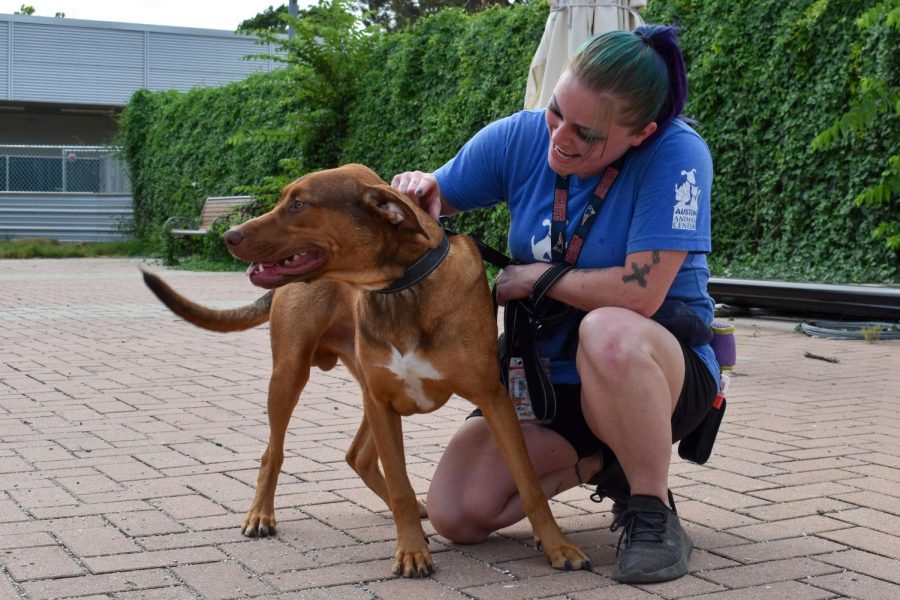Austin Animal Center faces space crisis as intake numbers soar
June 28, 2021
For Erin Coleman, a day at the Austin Animal Center means monitoring and bottle feeding dozens of kittens and puppies. As animals accumulate, however, space decreases.
“We are getting more animals in than we are able to get out,” said Don Bland, chief animal services officer for the city of Austin, during the Austin Animal Advisory Commission’s June 14 meeting.
The Austin Animal Center took in 1,061 animals during the month of May alone and has already taken in 969 animals as of June 21, according to the city of Austin. Staff members at the center are calling for community support as more animals come in and space runs out.
Bland said the large number of intakes is the result of two factors: increased travel and kitten season, which is an influx of kitten births between April and October. As COVID-19 restrictions are lifted, more people are leaving their homes and are more likely to stumble upon stray or lost cats and dogs, Bland said.
Coleman, the primary veterinary technician for the center’s kitten nursery, said people often bring healthy stray kittens to the shelter. Coleman emphasized that kittens’ survival chances decrease by 50% when separated from their mothers too soon.
“If you find little tiny kittens and they’re chubby, chunky (and) healthy looking, please try to leave them where they are,” Coleman said. “That means that their mom is still taking care of them.”
Marisa Ledesma, senior pet resource center specialist, said another issue is that a wandering animal may not be lost, just loose.
“Statistically, animals are found within 200 yards of their home, so we want people once they find an animal, not to just bring it straight away to the shelter, but to walk it around the neighborhood or post it on social media, on your Nextdoor pages, stuff like that,” Ledesma said. “Once the animal gets here, that makes it more difficult … for the owner to come in and reclaim it.”
In addition to facing an increase in animal intake, the Austin Animal Center faces a staff and volunteer shortage, a problem Bland said is primarily caused by COVID-19. Due to coronavirus-related capacity limits, Bland said they had to let go of all volunteers for several months.
“It was painful, because we were having to do a lot of this stuff that we relied on volunteers to do, and it was painful for the volunteers because they enjoy coming here and helping out and they weren’t able to do that.”
Bland said the center needs more volunteers, but even more importantly, it needs people willing to foster animals in their own homes. Foster homes offer a less stressful environment for the animals, he said.
Radio-television-film junior Samantha Ward said she has been fostering dogs since eighth grade.
“It’s a great experience to be able to give a dog a home that might have not been given a chance before,” Ward said.
Bland hopes more people will consider fostering to accommodate the shortage, and help ensure that Austin cats and dogs remain safe and healthy.
“It’s not just (the responsibility of) Austin Animal Center alone,” he said. “It’s a community effort.”











